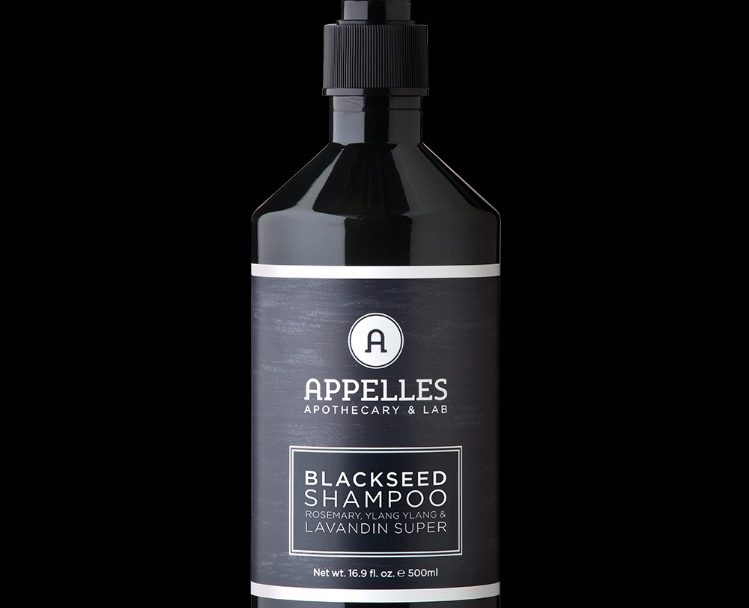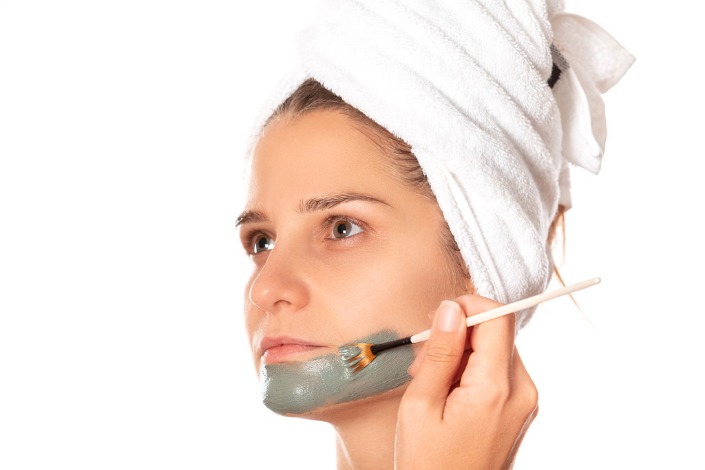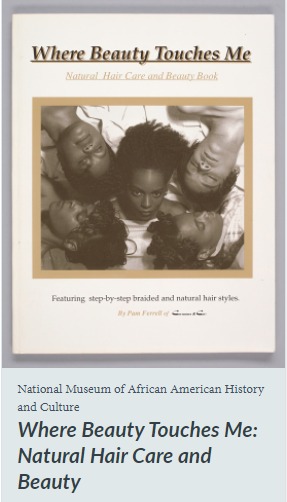Immediate Post-Bleaching Hair Care
Immediate post-bleaching hair care is crucial for maintaining the health and integrity of your hair after the bleaching process. Proper care helps to hydrate, strengthen, and prevent damage, ensuring your hair remains silky and vibrant. Implementing gentle treatments and choosing the right products can significantly improve the longevity and appearance of your freshly bleached hair.
Rinsing and Gentle Cleansing
After bleaching your hair, it’s essential to prioritize gentle care to maintain its health and vibrancy. Rinsing your hair with cool or lukewarm water helps seal the cuticles, preserving moisture and color. Use a sulfate-free, nourishing shampoo formulated for bleached or damaged hair to cleanse without stripping away essential oils. Follow with a conditioner designed for color-treated hair to replenish moisture and strengthen the strands. Incorporating deep conditioning treatments or hair masks once a week can further restore elasticity and reduce breakage. Remember to avoid excessive washing and harsh styling tools to minimize additional damage, ensuring your hair remains soft, shiny, and healthy after bleaching.
Applying Bond Rebuilding Treatments
Immediately after bleaching, hair becomes more fragile and susceptible to damage, making proper post-bleaching care essential. Applying bond rebuilding treatments helps restore the hair’s internal structure, strengthen damaged bonds, and reduce breakage. These treatments penetrate deep into the hair cortex, providing necessary proteins and amino acids that rebuild weakened fibers. It is recommended to use bond rebuilding products promptly after bleaching, following the specific instructions for optimal absorption. Regularly incorporating these treatments into your hair care routine will ensure healthier, stronger hair while maintaining the desired color results. Additionally, pairing bond rebuilders with moisturizing and nourishing conditioners will help restore moisture and keep hair resilient against future damage.
Patting Hair Dry
After bleaching, proper hair care is essential to maintain the health and integrity of your hair. One important step is patting your hair dry gently instead of rubbing it vigorously. This helps minimize breakage and prevents further damage to the already weakened hair strands. Use a soft towel and gently press or pat your hair to absorb excess moisture. Avoid rough towel drying, as it can lead to frizz and split ends, compromising your hair’s condition. Incorporating this simple technique into your post-bleaching routine can help keep your hair looking shiny, healthy, and vibrant.
Short-Term Hair Care Routine
Maintaining healthy hair after bleaching requires a tailored short-term hair care routine to restore moisture and prevent damage. Proper care immediately following bleaching helps protect the hair’s structure, ensuring it remains strong and vibrant. By using gentle products and avoiding harsh treatments, you can effectively support your hair’s recovery during this critical period.
Using Sulfate-Free Shampoo
After bleaching your hair, establishing a gentle and effective short-term hair care routine is essential to maintain health and prevent damage. Using a sulfate-free shampoo helps cleanse your hair without stripping away natural oils or moisture, which is crucial for colored or treated hair. Opt for a sulfate-free formula that is specifically formulated for damaged or bleached hair to nourish and strengthen each strand. Incorporate a moisturizing conditioner after shampooing to restore hydration and reduce brittleness. Additionally, avoid washing your hair too frequently—every 2-3 days is ideal—to preserve the color and minimize stress on your hair. Using cool or lukewarm water during washing can also help seal the hair cuticle, locking in moisture and enhancing shine. Regularly applying a deep conditioning treatment or hair mask once a week will further aid in repairing damage and maintaining softness and manageability. Protect your hair from heat styling tools and chemical exposure to ensure your hair stays healthy and vibrant after bleaching. Consistency with these gentle practices will promote faster recovery and longer-lasting color while keeping your hair looking its best.
Incorporating Protein Treatments
After bleaching, maintaining your hair’s health is essential to prevent damage and breakage. A short-term hair care routine focused on incorporating protein treatments can effectively strengthen your strands and restore vitality. Begin by using a gentle, sulfate-free shampoo to cleanse your hair without stripping away natural oils. Follow with a deep conditioning mask formulated with moisturizing ingredients to hydrate your hair. Incorporate a weekly protein treatment into your routine, applying it after shampooing and leaving it on for the recommended time to reinforce the hair’s structure. Finish with a leave-in conditioner to seal in moisture and protect your hair throughout the day. Consistently following this routine can help keep your bleached hair resilient, smooth, and healthy-looking.
Applying Deep Conditioning Masks
After bleaching your hair, establishing a short-term hair care routine is essential to restore moisture and protect your strands. One effective step is applying deep conditioning masks regularly to combat dryness and damage caused by the chemical process. These masks help to replenish essential nutrients, strengthen compromised hair, and improve overall shine. It’s recommended to use a deep conditioning treatment at least once a week, focusing on the ends where damage is often most severe. Gently massage the mask into your hair, leave it on for the instructed time, and rinse thoroughly to maximize results. Consistently incorporating these masks into your routine can significantly enhance the health and appearance of bleached hair, preventing breakage and maintaining softness.
Long-Term Hair Maintenance
Maintaining healthy, vibrant hair after bleaching requires a dedicated and mindful hair care routine. The transformative process of bleaching can weaken hair, making it essential to adopt long-term strategies to preserve its health and shine. Proper maintenance not only extends the life of your color but also ensures your hair remains strong, smooth, and manageable over time.
Regular Trim to Prevent Split Ends
Maintaining healthy hair after bleaching is essential to prevent damage and keep your hair looking vibrant. Regular trims are a key part of long-term hair care, especially when dealing with the stress caused by bleaching treatments. They help remove split ends and prevent further breakage, ensuring your hair remains smooth and strong.
- Schedule trims every 6 to 8 weeks to maintain hair health and remove any damaged ends.
- Use a good quality conditioner and deep treatment masks to restore moisture and elasticity.
- Avoid excessive heat styling to minimize additional damage to already weakened hair.
- Apply leave-in conditioners or serums that protect against environmental stressors and enhance durability.
- Incorporate regular scalp massages to improve blood circulation and promote healthy growth.
Scheduling Professional Treatments
Maintaining healthy hair after bleaching requires a well-planned schedule for professional treatments to restore the hair’s strength and shine. Regular visits to a licensed stylist can help address specific damage and provide targeted treatments such as deep conditioning, bond rebuilding, and glossing. It is important to schedule these treatments every 4 to 6 weeks, depending on the hair’s condition and the extent of bleaching. Consistent professional care ensures your hair remains vibrant and resilient, preventing further damage and maintaining the desired color. Additionally, consulting with your stylist about personalized treatment plans can optimize results and support long-term hair health after bleaching.
Monitoring Hair Health and Color Fading
Maintaining healthy hair after bleaching requires consistent care and attention to prevent damage and preserve color vibrancy. Regular deep conditioning treatments help restore moisture and strengthen hair fibers, reducing brittleness and breakage. Using sulfate-free shampoos and color-safe conditioners can prolong the brightness of bleached hair while minimizing fading. Monitoring hair health involves checking for signs of dryness, split ends, or scalp irritation, and addressing them promptly with nourishing masks and gentle products. To prevent color fading, avoid excessive heat styling, reduce sun exposure, and rinse hair with cool water after washing. Scheduling trims every 6-8 weeks can also help maintain overall hair health and appearance, ensuring your hair remains vibrant and resilient long after bleaching.
Home Remedies for Damaged Hair
Bleaching hair can leave it looking vibrant and fresh, but it often causes damage, making hair brittle and prone to breakage. Fortunately, there are effective home remedies that can help restore health and shine to damaged hair. By using natural ingredients, you can nourish your hair, repair cuticles, and bring back its smoothness and luster without the need for costly treatments.
Oil Treatments (Coconut, Argan, Olives)
After bleaching, hair tends to become dry, brittle, and prone to damage. One effective way to restore its health is through natural oil treatments that nourish and repair damaged strands. Oils such as coconut, argan, and olive oil are popular choices for deep conditioning and revitalizing bleached hair.
Coconut oil is highly valued for its penetrating properties, which help to hydrate the hair from within. To use, warm a small amount of coconut oil and massage it into your scalp and hair. Leave it on for at least an hour or overnight for optimal results before shampooing. This treatment helps reduce protein loss, restore moisture, and improve overall hair strength.
Argan oil, often called ‘liquid gold,’ is rich in antioxidants, vitamin E, and fatty acids that protect damaged hair from environmental stressors and heat styling. Apply a few drops of argan oil onto damp or dry hair, focusing on the ends. It detangles hair, adds shine, and smooths frizz, making it perfect for maintaining healthy bleached hair.
Olive oil is another excellent natural remedy for repairing damaged hair. Its deep conditioning properties help soften rough, brittle hair. Warm a small quantity of olive oil and massage it into your scalp and lengths. Cover your hair with a towel or shower cap and leave it for 30 minutes to an hour before washing. Regular use helps improve elasticity and reduces breakage.
Incorporating these oil treatments into your hair care routine after bleaching can significantly enhance hair health, helping to restore moisture, strength, and shine. Consistency is key, and combining oil treatments with gentle, sulfate-free shampoos will yield the best results for damaged hair.
Honey and Aloe Vera Masks
After bleaching, hair can become dry, porous, and prone to damage, requiring special care to restore its health. Honey and aloe vera masks are natural remedies that offer deep hydration and nourishment, making them excellent choices for hair care after bleaching. Honey is a natural humectant that attracts moisture to the hair shafts, helping to improve elasticity and shine. Aloe vera contains enzymes and vitamins that soothe the scalp, reduce irritation, and strengthen hair strands. Combining these ingredients into a regular hair mask can significantly improve the texture and appearance of damaged, bleached hair.
To prepare a honey and aloe vera mask, mix two tablespoons of honey with two tablespoons of pure aloe vera gel. Apply the mixture evenly to damp hair, focusing on the lengths and ends. Cover your hair with a shower cap and leave it on for 30 to 45 minutes to allow the nourishing properties to penetrate deeply. Rinse thoroughly with lukewarm water and gently shampoo if needed. Using this mask once a week can help replenish moisture, restore softness, and promote healthier, more resilient hair after bleaching.
DIY Hair Repair Sprays
After bleaching, hair often becomes dry, brittle, and prone to damage. Fortunately, several home remedies and DIY hair repair sprays can help restore moisture and strength to your hair, making it look healthier and more vibrant. Incorporating these natural solutions into your hair care routine can significantly improve the condition of bleached hair.
- Coconut Oil Treatment: Warm some coconut oil and apply it generously to your hair, focusing on the ends. Leave it on for at least 30 minutes or overnight before washing out. Coconut oil deeply moisturizes and helps repair broken hair strands.
- Castor Oil Mix: Combine castor oil with a few drops of essential oils like lavender or rosemary. Massage into scalp and lengths, then cover with a shower cap. Rinse thoroughly after an hour to boost hydration and stimulate hair growth.
- Avocado and Honey Mask: Mash one ripe avocado and mix with two tablespoons of honey. Apply evenly to damp hair and leave for 20-30 minutes before rinsing. This mask provides essential nutrients and hydration to damaged hair.
- Aloe Vera Gel Spray: Extract fresh aloe vera gel and mix it with a little water in a spray bottle. Use it as a leave-in conditioner to soothe the scalp and strengthen hair strands throughout the day.
- Homemade Hair Repair Spray: Prepare a mixture of rose water, distilled water, and a few drops of argan oil in a spray bottle. Lightly spritz on your hair daily to add moisture and protect against further damage.
Consistent use of these natural remedies can help improve the texture and health of bleached hair, reducing further damage and promoting a softer, shinier appearance.
Protecting Hair from Environmental Damage
Protecting your hair from environmental damage is essential to maintain its health and vibrancy, especially after bleaching. Exposure to sun, pollution, and harsh weather conditions can weaken hair strands, leading to dryness, breakage, and color fading. Implementing proper hair care routines and protective measures can help preserve the integrity of bleached hair and keep it looking its best for longer.
Using UV Protectant Sprays
Protecting your hair from environmental damage is essential, especially after bleaching, when hair becomes more fragile and susceptible to damage. Using UV protectant sprays can help shield your hair from harmful sun rays, wind, and pollution that can further weaken and dull your hair. These sprays create a protective barrier that absorbs or deflects damaging UV rays, preventing color fading and maintaining your hair’s health and vibrancy. For best results, apply the UV protectant spray evenly onto damp or dry hair before heading outdoors, and reapply throughout the day if you are exposed to prolonged sunlight. Incorporating this step into your hair care routine can significantly extend the life of your bleached hair and keep it looking healthy, shiny, and resilient against environmental stressors.
Wearing Hats or Scarves
Wearing hats or scarves can be an effective way to protect bleached hair from environmental damage caused by sun exposure, wind, and pollution. These coverings act as a physical barrier, shielding your hair from harmful UV rays that can weaken the hair shaft and lead to color fading or brittleness. When choosing a hat or scarf, opt for breathable fabrics to prevent excess moisture buildup, which can further damage delicate bleached strands. Additionally, wearing a wide-brimmed hat not only offers better protection but also adds a stylish element to your hair care routine. Remember to complement this protection with deep conditioning treatments and regular use of UV protectant sprays to maintain the health and vibrancy of your bleached hair.
Rinsing Hair After Chlorinated or Salt Water Exposure
Protecting your hair from environmental damage is essential, especially after bleaching, to maintain its health and integrity. Exposure to sun, wind, pollution, and water can weaken the hair, leading to dryness and breakage. Rinsing your hair properly after exposure to chlorinated or salt water can significantly reduce damage and preserve your color-treated hair.
- Always rinse your hair thoroughly with clean, cool water immediately after swimming in chlorinated or salt water to remove residues that can cause dryness and discoloration.
- Use a gentle, sulfate-free shampoo designed for color-treated hair to cleanse without stripping natural oils.
- Follow up with a deep conditioning treatment or a hair mask to replenish moisture and strengthen your strands.
- Apply a leave-in conditioner or a protective serum to form a barrier against environmental stressors.
- Wear a hat or a swim cap when exposed to intense sun or windy conditions to prevent further damage.
- Avoid excessive heat styling, which can exacerbate damage caused by environmental factors.
- Rinse hair immediately after exposure to chlorine or salt water to minimize residue buildup.
- Use a clarifying shampoo weekly to remove any remaining deposits that could weaken the hair.
- Apply nourishing oils such as argan or coconut oil to protect the hair cuticle and restore moisture.
- Trim damaged ends regularly to prevent split ends from traveling up the hair shaft.



